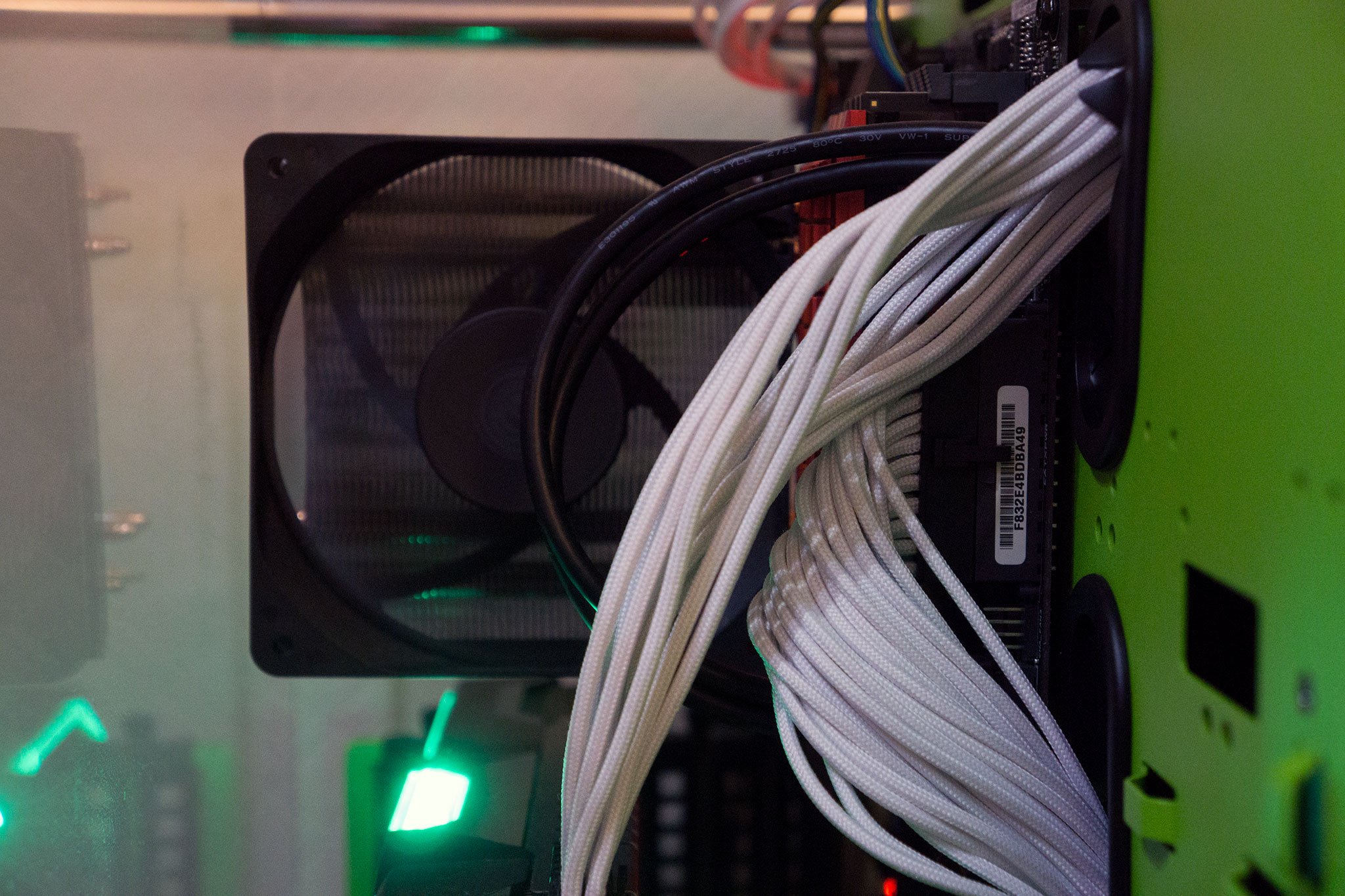How to find the right aftermarket CPU cooler for your PC
Here's how to choose the right CPU cooler for your PC.

Your PC's processor and other components produce a lot of heat when in use, and all this thermal activity needs to be transferred outside the case. There are a few ways this can be achieved with the CPU. Traditional air cooling uses a clamp to attach a heatsink block, which draws heat away from the processor. A fan then blows air through metal fins to dissipate the heat inside the chassis, which is then taken outside by an exhaust case fan.
Water-cooling is a whole other ball game, using a radiator, a pump and a block to achieve similar results but using liquid to take heat away from the processor. It's similar to how the radiator works on your vehicle. Water-cooling can produce better results by keeping the CPU cooler than air solutions, but prices can quickly get out of control. Some processors come with a bundled cooler, but even if you have one, it can be a good idea to swap it out for an aftermarket solution.
Picking a CPU cooler
The main decision you need to make when it comes to CPU coolers is what you want to do with your PC. Overclocking generally requires water-based solutions, while tower coolers with massive fans are perfectly fine for keeping temperatures down if you don't push components too far beyond factory settings. When looking at coolers, the more surface area you have, the more levels of cooling capacity.
If you cannot provide adequate cooling for the PCU, the component will begin to thermal throttle itself by reducing voltage and frequency, meaning the system will run slower. When taking CPU sockets into account, most coolers — air or water — are compatible with all sockets on Intel and AMD platforms. Older products will not be compatible with AMD's new AM4 socket without an optional bracket, but some coolers have been released with out-of-the-box support.
Blowing on the CPU

Air cooling is incredibly common thanks to the price and performance of these options. Most coolers are incredibly affordable, starting at under $10, but the more you spend the better the cooling you'll generally get. The reason it's better to go with an aftermarket cooler is they usually have more surface area than those provided by AMD and Intel, not to mention larger fans for forced convection.
While you need to make sure you have adequate space and airflow inside the case regardless of whether or not you rely on air or water, some air coolers can be bulky beasts that take up a fair amount of room. If you're not wanting to mess around with water around electronics, I always recommend a single blower setup, which should work perfectly fine, even with some overclocking.
All the latest news, reviews, and guides for Windows and Xbox diehards.
The Cooler Master Hyper 212 is a fantastic cooler. On a system with an overclocked Intel Core i5-6600K at 4.6GHz, the temperature barely rises above about 120 degrees F (50 degrees C), well within the safe operating range. The best part is this cooler only costs around $30. That's excellent performance per dollar.
Mixing water with electronics

Water. Electronics. What on earth are you thinking?
We all know you shouldn't mix liquids with electronics — hence why you should never drop your phone in the bathtub — but when it comes to cooling a CPU and other components, water can trump the rest. There are a few options when it comes to water-cooling, even if you've never used water before and have no idea when it comes to building your own loop. In fact, you don't even need to go with a DIY job.
All-in-one (AIO) liquid coolers come ready to use without any input from yourself. The pump, radiator, CPU block and fan are assembled, leaving you only with the task of installing it. It's sealed, tested and good to go and can provide a little piece of mind for anyone just starting out with liquid. These AIO coolers are generally more expensive than air coolers since there are more parts included. You'll be spending $100 and above.
Just like air coolers, these units are generally compatible with most sockets and CPUs, but be sure to double check before buying. Hit the link below for our recommended products there.
Best all-in-one liquid coolers
For custom water-cooling loops, this is where things get really expensive. It's easy to spend anywhere up to $500 and above on a setup that not only performs way beyond what you need for overclocking but looks awesome. I've done a full guide on water-cooling you should totally check out if you want to do your own liquid loop for your PC.
What cooler do you use?
Have a favorite you simply could not build systems without? Sound off your favorite coolers in the comments.

Rich Edmonds was formerly a Senior Editor of PC hardware at Windows Central, covering everything related to PC components and NAS. He's been involved in technology for more than a decade and knows a thing or two about the magic inside a PC chassis. You can follow him on Twitter at @RichEdmonds.
